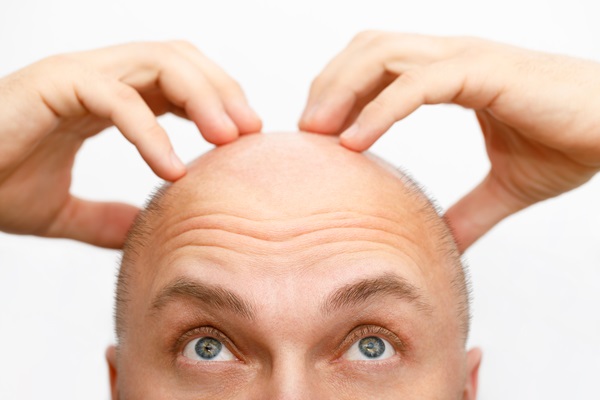Do You Need Thinning Hair Treatment?

You might be able to restore your hair loss with thinning hair treatment. Lots of advances in hair loss have been made in the past few decades, and a hair doctor can help to diagnose and treat underlying conditions that lead to hair loss.
The American Academy of Dermatology (AAD) states it is perfectly normal to lose up to 100 hairs per day. However, losing any more than this could be a sign you are shedding more hair than you should, which will eventually lead to thinning hair.
Thinning hair does not always lead to baldness like widespread hair loss does, but it can lead to noticeable sparse areas on your head. Hair thinning is a slow process that occurs gradually, so it can be reversed if a hair doctor pinpoints the cause and recommends appropriate treatments.
Figuring out if you need thinning hair treatment
Anyone who sheds an abnormal amount of hair can benefit from thinning hair treatment. Hair thinning can be caused by various things like genetics, lifestyle habits, or a combination of both. Some health conditions, like immune system disorders, can also cause hair thinning.
Some of the lifestyle habits that can lead to thinning hair include overtreating your hair, using harsh hair products, wearing tight hairstyles that tug on your hair like ponytails, and not getting enough nutrients like folic acid. Chronic stress can also lead to hair loss.
Some of the health events that can lead to hair thinning include childbirth, hormonal changes, losing significant amounts of weight, skin disorders, and eating disorders.
Treatment options
The first step toward treating thinning hair is diagnosing its root cause. Once that has been determined, it is only a matter of performing treatments that address the underlying problem. Some of the treatments a hair doctor might recommend for patients with thinning hair include:
1. Minoxidil
Minoxidil is one of the most popular treatments for hair loss. It typically comes in foam or liquid form, and it is applied to areas with hair loss to thicken hair and promote regrowth. It is approved by the Food and Drug Administration as a treatment for hair loss. It is typically available as an over-the-counter product.
Minoxidil needs to be used daily and continuously to achieve and maintain the desired results. Patients must be committed to the treatment for the best results. It can take a few months to get significant improvements in hair growth.
2. Spironolactone
Spironolactone is often prescribed to treat hair loss caused by aldosterone hormones. It is commonly used in medicine as a diuretic or high blood pressure drug, but it is an anti-androgen as well. It has been shown to help women with hair loss caused by hormonal fluctuations. Some of the side effects associated with Spironolactone include headaches and dizziness.
3. Finasteride
Finasteride is an FDA-approved drug for male hair loss. It is only available via prescription, and it is typically not prescribed to pre-menopausal females since it can lead to some significant side effects during pregnancy. However, it can be an effective hair loss treatment for post-menopausal females. Hair loss treatment with Finasteride typically involves taking a pill orally daily.
4. Corticosteroids
These are prescription drugs that are typically used to address underlying inflammation that might be responsible for a patient’s hair loss. For instance, alopecia areata is an immune system disorder that causes the immune system to attack hair follicles, leading to hair loss and hair thinning.
Corticosteroids can help to control inflammation at the source, reducing the severity of hair loss and thinning. The drugs are typically administered topically or injected into the affected area every four to eight weeks.
5. Hair transplant surgery
Hair transplant surgery is usually recommended for severe hair loss. The procedure typically involves harvesting healthy hairs from areas of the head that have not been affected by hair loss and transplanting them to bald areas or areas with thinning hair.
At times, strips of skin with multiple hair grouping might be taken and grafted over bald areas. Patients are sedated during hair transplant surgery, so they do not experience discomfort during the procedure. Some swelling, brushing, and bleeding after the procedure is normal. It might take up to a month for the treated area to fully heal.
6. Laser hair therapy
This involves using the heat generated by a laser to improve blood flow in the scalp, promoting the healthy growth of hair. It is typically most effective on thinning hair and helps to thicken it.
We restore thinning hair
Dealing with thinning hair? Our hair doctor can help to reverse that. Call or stop by our Schaumburg clinic to get started.
Request an appointment here: http://dillonhair.com or call Dillon Hair Restoration at (800) 518-9307 for an appointment in our Schaumburg office.
Check out what others are saying about our services on Yelp: Thinning Hair Treatment in Schaumburg, IL.
Recent Posts
Hair loss can usher in mixed emotions and damper your self-esteem, whether or not you were expecting the day. Fortunately, hair plugs or grafts can provide patients with a full head of their natural hair. If thinning or balding is something you are experiencing right now, help is available at our Schaumburg office. First, review…
Hair thinning treatments are far more versatile than they get credit for. Our team works closely with each patient to determine the root cause of their thinning tresses and craft an effective treatment plan. Take a closer look at common causes of hair thinning and the various methods we can use to treat it.Many factors…
Hair loss can significantly impact people, affecting their self-confidence and interpersonal relationships. Fortunately, hair grafting, also known as hair transplantation, provides a viable option to restore the natural hairline. If you are still deciding whether to pursue a hair graft, here are three reasons to consider it.Unlike temporary solutions like wigs or hairpieces, a hair…
For those with wrinkled skin, Botox® injections can provide great relief. While it may be a natural sign of aging, the presence of wrinkles can be frustrating to some. Thanks to the scientific research and testing in the 1990s by several dermatologists, Botox® was approved in 2002 by the Food and Drug Administration for cosmetic…


